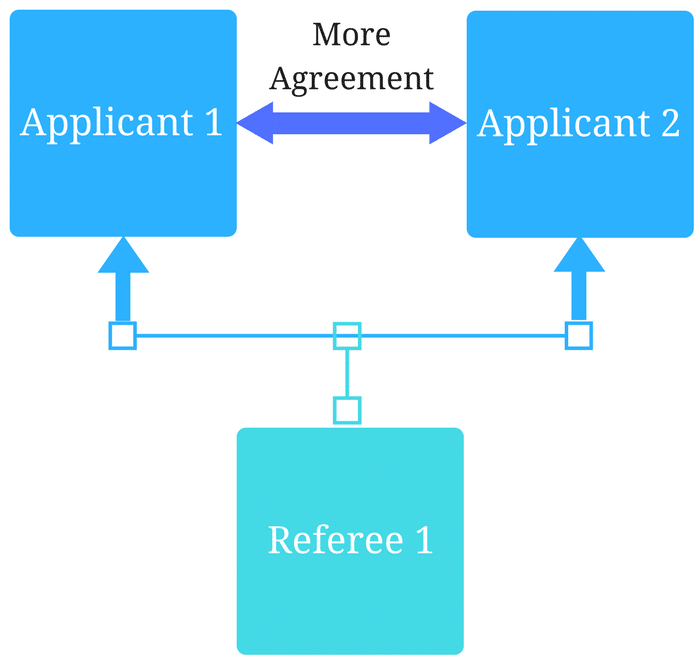CACMS vs. LCME Standards – Where do they Diverge?

June 19, 2025
Understanding Canadian vs U.S. medical school accreditation
As July 1, 2025 approaches, medical schools in North America face a critical alignment challenge around CACMS vs LCME Standards. In the United States, the Liaison Committee on Medical Education (LCME) standards remain the benchmark for MD-granting programs; in Canada, the Committee on Accreditation of Canadian Medical Schools (CACMS) will implement its own parallel framework. Although both sets share a 12-standard structure and a common goal of ensuring educational quality, CACMS introduces several distinct priorities—social accountability, diversity, rural exposure, and Indigenous health chief among them—that extend or refine LCME requirements. For institutions operating on either side of the border, and especially those engaged in cross-border partnerships, understanding these divergences is essential. Below, we break down where CACMS adds nuance (or new elements) to LCME’s proven foundation, and outline practical considerations for schools gearing up for dual compliance.
1. Mission, Planning, Organization, and Integrity
LCME’s focus
- Emphasizes a clearly articulated mission, strategic planning, governance structures, and mechanisms for addressing conflicts of interest.
- Requires the school to publish its mission statement, define organizational charts, and ensure transparent reporting lines.
CACMS enhancements
- Social Accountability (Element 1.1.1): Schools must explicitly state how they address priority health concerns in their mission, embed those priorities within admissions and curriculum, and measure outcomes against local needs. This isn’t just a “nice-to-have”—it’s foundational. CACMS expects evidence that community health data (e.g., regional disease incidence, demographics) has guided mission development and curricular design.
Why this matters: “Social accountability” moves beyond LCME’s implicit community focus. If your mission statement simply echoes broad educational goals, you’ll need to rethink it: CACMS will ask, “Which specific health priorities in your region drive your strategic plan—and how do you prove impact?”
2. Leadership and Administration
In practice, LCME and CACMS align closely on administrative leadership: both require a qualified dean, adequate administrative staff, clear decision-making bodies, and board-level oversight. CACMS wording references Canadian governance norms (e.g., provincial oversight, university senate involvement), but otherwise mirrors LCME’s intent. Schools already meeting LCME’s leadership requirements will find few surprises here—aside from minor language adjustments to fit Canadian institutional structures.
3. Academic and Learning Environments
LCME scope
- Requires an institutional culture that supports learning, free from discrimination, harassment, or bias. Faculty and students must have equal access to resources, and policies must address any discriminatory behavior.
CACMS additions
- Diversity Programs and Partnerships (Element 3.3): Rather than simply prohibiting discrimination, CACMS requires proactive recruitment and retention strategies to achieve “mission-appropriate diversity outcomes” among students, faculty, leadership, and community partners. For example, a school must document pipeline programs targeting underrepresented rural populations or collaborations with community health organizations to diversify clinical instructors.
Practical takeaway: Under LCME, demonstrating non-discriminatory policies and equitable access is typically sufficient. Under CACMS, you must also show measurable progress—say, year-over-year increases in Indigenous or rural-background candidates—and evidence of formal DEI partnerships. If you’ve relied on passive admissions policies, now is the time to develop targeted outreach initiatives and track their outcomes.
4. Faculty Preparation, Productivity, Participation, and Policies
Broadly speaking, CACMS and LCME match on faculty standards: both frameworks stipulate sufficient faculty numbers, qualifications, professional development, and involvement in governance. Neither framework introduces major new requirements in this area, though schools should review wording differences around tenure practices, unionized faculty (more common in Canada), and intellectual property policies under CACMS. Unless you plan to restructure faculty governance, your existing LCME-aligned processes will likely satisfy CACMS here.
5. Educational Resources and Infrastructure
LCME emphasis
- Mandates adequate library assets, IT resources, clinical sites, and instructional spaces. Requires notification to the LCME if there are significant changes (e.g., campus expansions, major budget cuts).
CACMS specifics
- Notification Requirements (Element 5.12): CACMS elaborates a list of scenarios that trigger mandatory notice: creation of satellite campuses, modifications to institutional ownership or governance, major curricular shifts, or significant enrollment changes. While LCME also wants advance notification, CACMS’s list is more prescriptive—schools must submit updates within 60 days of board approval for any of these items.
Action item: Review your notification protocols. If your institution plans to open a rural training site or adjust enrollment targets, ensure you have a process to notify CACMS within the required timeframe. Even if LCME doesn’t specifically list that scenario, CACMS might.
6. Competencies, Curricular Objectives, and Curricular Design
LCME baseline
- Expects clearly defined competencies that guide curriculum mapping, specifying expectations for knowledge, skills, and attitudes. Requires clinical experiences in inpatient and outpatient settings.
CACMS refining elements
- Context of Clinical Learning Experiences (Element 6.4.1): CACMS explicitly requires exposure to diverse practice settings—urban, rural/remote, and underserved communities. LCME’s language is broader (“adequate inpatient and outpatient experiences”) but doesn’t call out rural or underserved care.
Critical reflection: If your U.S.-centric curriculum already relies heavily on academic medical centers and affiliated outpatient clinics, you may need to develop or formalize rural clerkship placements. CACMS will want to see that students spend measurable time in non-urban settings—and can demonstrate how those experiences reinforce population-health objectives.
7. Curricular Content
LCME coverage
- Requires instruction in behavioral and social sciences, ethics, patient safety, cultural competence, and other foundational topics.
CACMS expansions
- Social Determinants of Health (Element 7.5): While LCME covers social and behavioral sciences, CACMS adds a distinct expectation: measurable curricular content on social determinants, with explicit learning objectives and assessment.
- Cultural Competence with Indigenous Focus (Element 7.6): CACMS separates Indigenous health from general cultural competence. Schools must demonstrate Indigenous-specific curricula—covering topics like colonial history, Indigenous models of health, and culturally safe care.
- Professional and Leadership Development (Element 7.10): Unlike LCME (which infers professional identity formation across multiple domains), CACMS demands a standalone thread dedicated to leadership skills—interprofessional collaboration, health system navigation, and advocacy training.
Implication: If you rely on a broader “cultural competence” course or fold leadership topics into existing modules, CACMS evaluators will ask for discrete, assessed learning objectives that address Indigenous health and leadership development. You’ll need documented curriculum maps showing where those topics live, who teaches them, and how you measure proficiency.
8. Curricular Management, Evaluation, and Enhancement
In both sets of standards, schools must have a robust system for reviewing and improving the curriculum: a curriculum committee, program objectives, metrics for student performance, and regular outcome analyses. CACMS and LCME align closely here; minor wording differences involve reporting cycles (annual vs. biannual) and specific tools. If you already have a continuous-quality-improvement process aligned to LCME 8.1–8.7, you’ll meet CACMS’s expectations.
9. Teaching, Supervision, Assessment, and Student & Patient Safety
LCME framework
- Requires faculty supervision of learners, a fair assessment system, and policies to protect patient welfare. Student health services are addressed broadly under separate standards.
CACMS addition
- Student Health and Patient Safety (Element 9.10): CACMS introduces a discrete element focused on situations where a student’s physical or mental health might pose a risk to patients. Schools must show:
- Policies for faculty or staff to raise concerns about impaired learners without fear of reprisal.
- Procedures for assessing fitness to learn (e.g., health evaluations, accommodations, leaves of absence).
- Documentation that no student deemed unfit is assigned clinical duties.
Why this matters: LCME addresses student health implicitly under student support standards but does not specifically connect a student’s impairment to patient safety in a stand-alone requirement. Under CACMS, you’ll need a clearly documented “fitness for duty” policy, evidence of faculty training on recognizing impairment, and case logs (de-identified) illustrating how concerns were managed.
10. Medical Student Selection, Assignment, and Progress
LCME approach
- Emphasizes holistic admissions—broad undergraduate preparation, academic and nonacademic attributes—but does not prescribe specific competency domains before matriculation.
CACMS’s Core Competencies (Element 10.5)
- Requires publication of a competency framework for entering students—covering areas such as interpersonal skills, critical thinking, and foundational sciences. Schools must demonstrate how the admissions committee assesses those domains.
Key point: Under LCME, applicants need a solid science background and preferably exposure to humanities or social sciences, but schools have discretion on how to articulate and measure pre-matriculation competencies. Under CACMS, you must publish a clear set of expected competencies and show that your selection process specifically screens for them (e.g., interview questions mapped to each domain). If your admissions website lists minimal “prerequisites” rather than a full competency framework, you’ll need to revise.
11. Medical Student Academic Support, Career Advising, and Academic Records
LCME context
- Requires academic support services, career advising, and transparent record-keeping. The Medical Student Performance Evaluation (MSPE)—also known as the Dean’s Letter—must follow AAMC guidelines, timed for U.S. residency applications.
CACMS refinements
- Confidentiality & Privacy (Elements 11.5–11.6): CACMS explicitly references Canadian federal/provincial privacy legislation (e.g., PIPEDA) for student records. While LCME speaks to FERPA in the U.S., CACMS expects alignment with Canada’s privacy framework.
- MSPE Timing and Content (Element 11.4): CACMS requires that MSPEs align with Canadian residency cycles (Canadian Residency Matching Service, CaRMS). That means schools must adapt both the structure and release dates of their Dean’s Letter to the CaRMS timeline.
Practical reminder: If your program currently issues MSPEs according to ERAS schedules (August/September), you must adjust to CaRMS deadlines (January–February). Also, double-check that your consent forms, record-sharing protocols, and data-security measures meet Canadian privacy standards, not just U.S. requirements.
12. Medical Student Health Services, Personal Counselling, and Financial Aid
Both LCME and CACMS require:
- Accessible health services (physical and mental health), a confidential counseling referral system, and financial aid resources.
- Insurance coverage requirements (malpractice, liability, disability).
Nuance in wording
- CACMS references Canadian healthcare and insurance contexts: provincial health plans, coverage for off-campus rotations, and student assistance programs grounded in Canadian law. LCME’s language is U.S.-centric: HIPAA compliance, U.S. malpractice carriers, etc.
Action item: Verify that your student handbooks and service contracts use Canadian service-provider names, provincial health directives, and insurance vendors. Even if your health and counseling services are functionally identical, the documentation needs to reflect local regulatory frameworks.
What This Means for Your Institution
Policy and Documentation Audit:
Assemble a cross-functional team (academic affairs, student services, privacy office, admissions) to compare existing policies against CACMS’s added elements. In many cases, you’ll find pockets of compliance already in place—e.g., Indigenous health content in courses—but may lack formal documentation.
Curriculum Mapping & Gap Analysis:
Use a detailed curriculum map to identify where social determinants, Indigenous health, leadership development, and rural/underserved experiences are taught, assessed, and reported. If gaps appear, consider curriculum committee action items: new modules, integrated assessment tools, or strategic partnerships (for rural rotations, for example).
Admissions Policy Revision:
Draft—or revise—your published competency framework for incoming students. Ensure admissions rubrics explicitly reference each pre-matriculation competency domain. Align interview scoring, file review templates, and matriculation surveys with the published framework.
Privacy & Notification Processes:
Work with legal/compliance teams to update record-privacy policies per Canadian legislation. Establish a rapid notification protocol for CACMS changes—especially for new campuses, governance shifts, or enrollment adjustments.
Faculty & Staff Training:
Develop workshops on CACMS’s unique elements—particularly fitness-for-duty protocols and recognizing impairment, Indigenous cultural safety, and social accountability measures. Document attendance and track how these workshops inform policy updates.
Timeline & Communication Plan:
Map each divergent element to a project timeline. Assign an owner to each task—Curriculum Committee for content gaps; Student Affairs for health & safety policies; Admissions for competency publications; Legal/Compliance for privacy; Dean’s Office for mission and social accountability tracking.
From Compliance to Opportunity
It’s easy to view accreditation revisions as a compliance exercise—yet CACMS’s additions present an opportunity to deepen your program’s impact. By embedding social accountability into your mission, actively recruiting diverse learners and faculty, and ensuring real-world exposure to underserved communities, you not only satisfy CACMS but also strengthen your institution’s relevance in a rapidly changing health-care landscape.
If you’ve relied on LCME alignment alone, now is the time to expand your lens. Consider CACMS’s emphasis on Indigenous health and community-driven priorities not as hurdles, but as levers for innovation—curricular threads that reinforce leadership, advocacy, and cultural humility. With careful planning, cross-campus collaboration, and transparent documentation, your program can meet both LCME and CACMS standards by July 1, 2025—and emerge better equipped to train physicians who understand and address the complex, varied health needs of North America’s communities.
For more on LCME and CACMS standards, download the current LCME accreditation standards and the CACMS 2025 standards or download our CACMS vs. LCME Standards Quick Reference Guide. To learn more about how Acuity Insights supports accreditation, read how Using One45 by Acuity Insights to Improve LCME Accreditation Outcomes.
Related Articles

How interviews could be misleading your admissions...
Most schools consider the interview an important portion of their admissions process, hence a considerable…
Reference letters in academic admissions: useful o...
Because of the lack of innovation, there are often few opportunities to examine current legacy…
